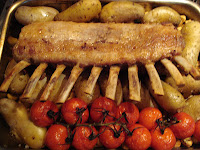Introduction to Beaujolais Region and wines
Located North of Lyon in Eastern France, Beaujolais overlaps Burgundy in the North and Rhône in the South. The picturesque Beaujolais vineyards run along the Saône River, where winemakers have crafted deliciously supple and fruity wines since the days of Ancient Rome. Over mainly granite terrain, the Beaujolais Crus form a meandering path.
From South to North, Brouilly is followed by Côte de Brouilly, Régnié, Morgon, Chiroubles, Fleurie, Moulin-à-Vent, Chénas, Juliénas and Saint-Amour.The region has ideal growing conditions.
The Gamay grape is used to make all Beaujolais wines with the exception of white Beaujolais, or Beaujolais blanc, which is made of Chardonnay grapes.
Only manual harvesting is allowed in the Beaujolais region. Hand-picking means that before being vatted, entire bunches are sorted to remove any bad grapes. This winemaking method is specific to the Beaujolais region.
Grape Variety: Gamay
The characteristic and exception of Beaujolais wines is that only one grape variety is used to make them all: Gamay Noir à Jus Blanc. Growing in the Beaujolais region since the beginning of 17th century, this variety has accompanied the region in the evolution of the vineyard and collective vinegrowing tradition. And it is, of course, on Beaujolais' limestone-clay and granitic soils that this plant has found its true home. Nearly 70% of the 36 000 hectares of land planted with Gamay Noir à Jus Blanc throughout the world is in Beaujolais.
Number of appellations:12, including 10 Crus
1.Brouilly
2.Chénas
3.Chiroubles
4.Côte de Brouilly
5.Fleurie
6.Juliénas
7.Morgon
8.Moulin-à-Vent
9.Régnié
10.Saint-Amour
11.Beaujolais
12.Beaujolais Villages
Beaujolais winemaking secret: carbonic maceration
A winemaking technique that’s widely practiced in the region contributes significantly to the style of Beaujolais wines. That technique is called carbonic maceration (because the grapes macerate, or soak, in a carbon dioxide-rich environment). It’s a fairly simple process in terms of what the winemaker does, but it’s more complicated chemically. The effect of the process is a reduction in the wine’s tannin and an enhancement of particular fruity aromas and flavors in the wine.The principal behind carbonic maceration is that when whole grapes are deprived of oxygen, they begin to ferment (their sugars convert to alcohol) from the inside.
This internal fermentation happens without the help of yeasts; normal fermentation, in contrast, occurs because yeasts come in contactwith the juice of crushed grapes.For the lightest Beaujolais wines —specifically, the style called Beaujolais Nouveau —the fermentation can be as short as three days. Other styles ferment for about ten days, during which time they gain more color and tannin from the grape skins than the lighter styles do.
a ppetit voyage is much more than reviews and recipes!
Follow the blog: www.appetitvoyage.com
Share your ideas on Facebook: https://www.facebook.com/appetitvoyage
Follow us on Twitter @appetitvoyage
cookingandtasting@appetitvoyage.com
A ppetit Voyage is your globe-trotting connoisseur: helping you change your mind about food, wines and cooking!


Comments